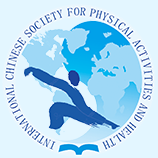Document Type
Abstract
Keywords
motor, whole-body vibration therapy, sarcopenia, intervention
Publication Date
2-2024
Abstract
Purpose: The highly morbid condition known as sarcopenia affects middle-aged and elderly people and is characterized by a progressive loss of whole-body muscle mass accelerated by aging. It is also accompanied by a decline in muscle strength and physiological function. These weakening functions manifest as impaired physical movement, increased risk of falls, disability, lower quality of life, and even death. Sarcopenia is progressively emerging as a new public health issue in China with a quickly aging population, making it vital to investigate effective exercise therapies for sarcopenic patients. Methods: Sixty sarcopenic patients (aged 60-75) from a local hospital in northeast China participated in the study. They were randomly divided into a test group and a control group, with 30 patients in each. The test group underwent a 40-minute whole-body vibration training session for 12 weeks, five times a week, while the control group kept regular routines. Data were collected at the end of the experiment, including muscle strength, muscle mass, muscle function, gait speed, berg balance scale (BBS), five sit-to-stand test (FTSST), activities of daily living (ADL), fall risk assessment scale (FRA), and Sarcopenia Quality of Life Scale (SarQoL) scores. Results: The 12-week whole-body vibration training intervention resulted in a significantly higher value of muscular strength, muscle mass, and muscle function among the test group compared to the control group. The former achieved substantially higher SPPB, ADL, FTSST, and BBS scores than the latter (p < 0.01). With much lower FRA scores and significantly better SarQoL ratings compared to baseline, the test group also significantly outperformed the control group in terms of fall risk and quality of life (p < 0.01). Conclusion: With whole-body vibration training, people with sarcopenia can increase their skeletal muscle strength, considerably enhance their motor function, lower their risk of falls and accidents, and generally improve their quality of life. Whole-body vibration training is worthy of therapeutic use since it is both feasible and practical.
DOI
https://doi.org/10.18122/ijpah.3.1.42.boisestate
Recommended Citation
Wang, Haixia; Hu, Mingjie; Wang, Guangxin; and Zhang, Xin-An
(2024)
"A157: The Effect of Whole-Body Vibration Therapy on the Motor Abilities of Patients with Sarcopenia,"
International Journal of Physical Activity and Health: Vol. 3:
Iss.
1, Article 42.
DOI: https://doi.org/10.18122/ijpah.3.1.42.boisestate
Available at:
https://scholarworks.boisestate.edu/ijpah/vol3/iss1/42
Included in
Exercise Science Commons, Health and Physical Education Commons, Public Health Commons, Sports Studies Commons



